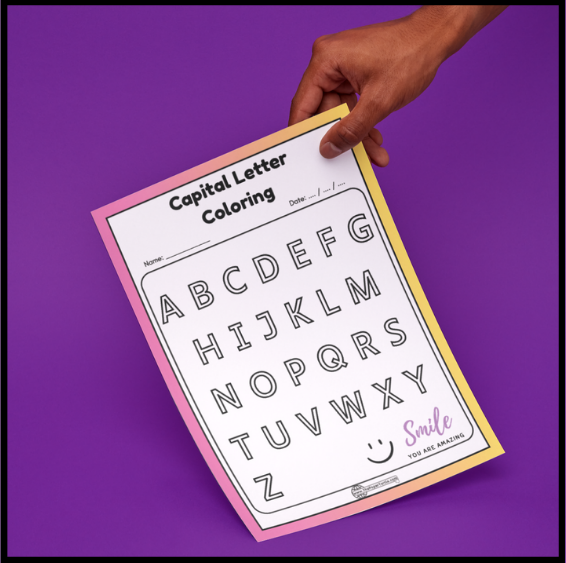Free Letter coloring Worksheets
In the vibrant world of early childhood education, innovative tools and techniques are continually being introduced to make learning a delightful experience for children. English letter coloring worksheets have emerged as a fun and effective way to engage young minds in the process of learning the alphabet. These worksheets not only capture the imagination of children but also offer a myriad of benefits that contribute to their overall cognitive development.
Benefits of English Letter Coloring Worksheets:
- Enhances Fine Motor Skills: Engaging in the intricate task of coloring within the lines helps children develop and refine their fine motor skills. Holding crayons or colored pencils and carefully filling in the shapes of letters require a level of precision that contributes to the development of hand-eye coordination.
- Letter Recognition: By associating each letter with a specific color, children reinforce their ability to recognize and recall the alphabet. The visual and tactile experience of coloring each letter creates a memorable connection between the shape of the letter and its corresponding sound.
- Encourages Creativity: Coloring worksheets provide a creative outlet for children to express themselves. It allows them to choose colors, experiment with combinations, and personalize their learning experience. This creative freedom fosters a positive attitude towards learning and builds confidence in their abilities.
- Reinforces Vocabulary: Associating colors with letters serves as a supplementary method for reinforcing vocabulary. When children remember the colors assigned to each letter, they are simultaneously learning the names and sounds of the letters. This multi-sensory approach enhances language retention.
- Promotes Focus and Concentration: The act of coloring demands concentration and attention to detail. As children focus on coloring each letter, they develop the ability to stay engaged with a task for an extended period. This skill is valuable for future academic success.
- Transition to Writing: Coloring letters lays the foundation for writing skills. As children become familiar with the shapes of letters and practice the motions of coloring, they are better prepared to transition to the more intricate task of forming letters through handwriting.



